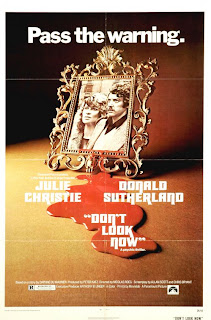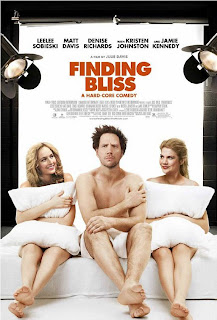"Don't Look Now" classical suspenser
Don't Look Now (1973)
110 min., rated R.
Grade: A
From the "in quotes" title on screen, "Don't Look Now" appears as a B-movie at first blush. But really, this is a classical horror-mystery and a devastating portrait of grief and predestined death that taps into a parent's worst primal fear—the death of their own child. Donald Sutherland and Julie Christie are superb as a married couple, John and Laura Baxter, whose daughter drowns in a pond on their country property. Leaving their son in school, the two depart for Venice, where John restores a 16th century church. In a restaurant, Laura meets two sisters, one of whom is blind and psychic and reassures her of her dead daughter's happiness. But then after a warning of danger, a short figure keeps reappearing in a hooded red raincoat—the same garment worn by John and Laura's daughter when she drowned.
From Daphne du Maurier's short story, "Don't Look Now" patiently moves and slowly gains more momentum halfway through, priming us with a "nothing is as it appears" atmosphere. Under the artful direction of Nicolas Roeg, he brilliantly fills his frame, evoking a menacing mood and subtle clues of impending doom. His Venice isn't a lovely tourist city here, but rather a shadowy place where, as one character describes it like "a dinner party" where "all the guests are dead and gone." Roeg makes chilling use of the Italian alleyways, bridges, and canals.
The editing combines poetic motifs of water and the color red, and powerfully intercuts images that alter the viewer's perception and wrap up the film's complex themes and narrative that can't be fully comprehended upon just one viewing. Finally, Pino Dongaggio's piano score is the oil to the machine, subtle and operatic when needed. Sutherland and Christie are emotionally convincing as parents in grief. Reportedly dating at the time, the two actors share such an intimate, erotic (and then-controversial) lovemaking scene that doesn't feel in the least simulated. The opening scene of the daughter's drowning is lyrically shot and edited, and heartbreaking in its artistic design. The last ten minutes of "Don't Look Now" are creepily cloaked in stark, foggy atmosphere and its payoff is memorably unnerving.
Although the identity of the red-hooded dwarf isn't important, the image is unshakable, much like the film itself. Evocative of Hitchcock but still very much its own entity, "Don't Look Now" is a richly layered and brilliantly tense piece of filmmaking that will fry your nerves and make you think.









Comments
Post a Comment